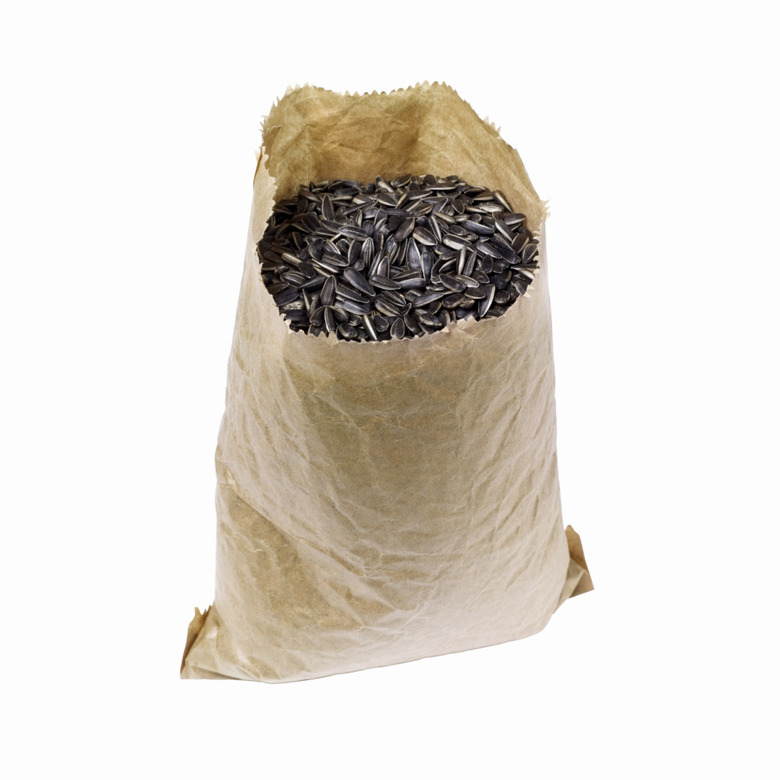Should I Cover An Area Of Grass Seed I Just Planted If Heavy Rains Are Coming?
Whether the kids are wearing a path in the grass with their bikes, or Rover is damaging the lawn when he does his business, you may need to sow additional seed to fill in the bare spots in your yard. Unfortunately, grass seed is most vulnerable to damage immediately after sowing. When heavy rains are in the forecast and your delicate seeds are at risk of washing away, it's best to cover them up to protect them from the torrent.
Grass Seed Germination
Step 1
While sowing grass seed is a relatively easy task, keeping it in place until it germinates is not always as simple. Depending on the type of grass seed sown and the growing conditions, germination time can be as quick as five days or as long as 30. Considering the season and your location, it's likely you could experience heavy rains before the seeds can take root. Factors such as sun, moisture, temperature and humidity also affect the germination rate of the seed.
- Whether the kids are wearing a path in the grass with their bikes, or Rover is damaging the lawn when he does his business, you may need to sow additional seed to fill in the bare spots in your yard.
- When heavy rains are in the forecast and your delicate seeds are at risk of washing away, it's best to cover them up to protect them from the torrent.
Why Cover?
Step 1
While it might seem logical that heavy rain would be good for your new grass seed, providing additional moisture and saving you money on your water bill, heavy rains can be detrimental to grass seed. Heavy rains can easily wash seeds away into other parts of the lawn that do not need to be seeded, or into the street or sidewalk wasting your time, money and effort. Seed planted on a slope or hill is particularly vulnerable to unintentional relocation due to rain.
Materials for Covering
Step 1
Several options exist for covering grass seed. Many homeowners choose mulch to help grass seed maintain its position and to protect it from hungry birds, heavy rains and cool temperatures. Unfortunately, mulch can contain weed seeds that may co-mingle with the grass seed. Opt for a weed-free version if possible. Some gardeners choose straw as a cheap way to cover grass seed before germination, and still others choose peat moss. While peat moss may cost more, it's a biodegradable option that's free from unwanted elements. Alternatively, fabric products that come in a roll can be purchased at lawn and garden centers, or home improvement stores, and be used to cover vulnerable seeds.
- While it might seem logical that heavy rain would be good for your new grass seed, providing additional moisture and saving you money on your water bill, heavy rains can be detrimental to grass seed.
- Heavy rains can easily wash seeds away into other parts of the lawn that do not need to be seeded, or into the street or sidewalk wasting your time, money and effort.
When and How to Cover
Step 1
Cover the grass seed as soon as you've sown and watered it. When using straw, spread one bale per 500 square feet. When using fabric cover, simply lay it lightly over the grass seed and tack it down at the corners with tent spikes. When using mulch or peat moss, cover the grass seed so some soil is still slightly visible through the application.
References
- Ortho's All About Lawns; Michael McKinley, Editor
- Southern States: Lawn Care Guide: Step 7 Apply Grass Seed Protection
- University of Vermont Extension: Seed or Sod?
- University of Connecticut Cooperative Extension System: Spring Lawn Seeding
